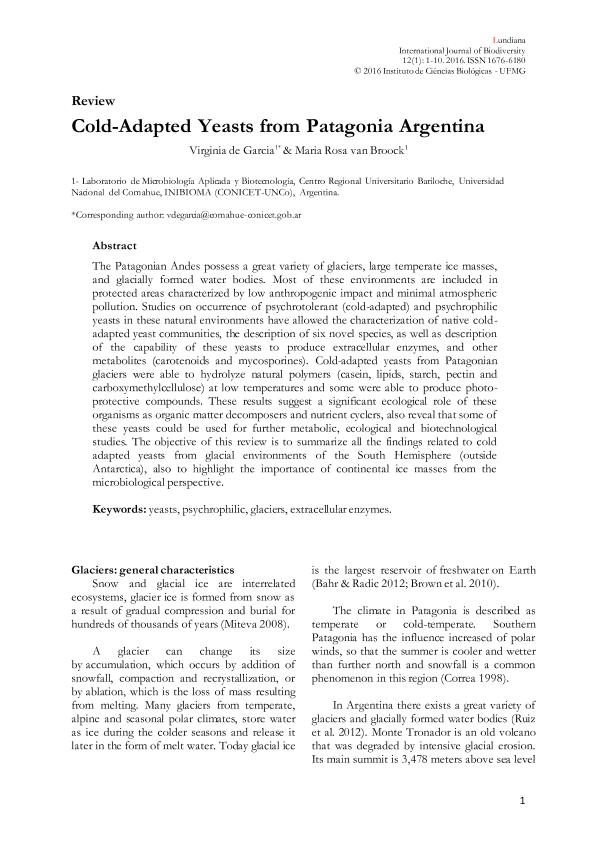Artículo
Cold-adapted yeasts from Patagonia Argentina
Fecha de publicación:
03/2016
Editorial:
Universidad Federal de Minas Gerais. Instituto de Ciências Biológicas
Revista:
Lundiana
ISSN:
1676-6180
Idioma:
Inglés
Tipo de recurso:
Artículo publicado
Clasificación temática:
Resumen
The Patagonian Andes possess a great variety of glaciers, large temperate ice masses, and glacially formed water bodies. Most of these environments are included in protected areas characterized by low anthropogenic impact and minimal atmospheric pollution. Studies on occurrence of psychrotolerant (cold-adapted) and psychrophilic yeasts in these natural environments have allowed the characterization of native cold-adapted yeast communities, the description of six novel species, as well as description of the capability of these yeasts to produce extracellular enzymes, and other metabolites (carotenoids and mycosporines). Cold-adapted yeasts from Patagonian glaciers were able to hydrolyze natural polymers (casein, lipids, starch, pectin and carboxymethylcellulose) at low temperatures and some were able to produce photo-protective compounds. These results suggest a significant ecological role of these organisms as organic matter decomposers and nutrient cyclers, also reveal that some of these yeasts could be used for further metabolic, ecological and biotechnological studies. The objective of this review is to summarize all the findings related to cold adapted yeasts from glacial environments of the South Hemisphere (outside Antarctica), also to highlight the importance of continental ice masses from the microbiological perspective
Palabras clave:
YEASTS
,
PSYCHROPHILIC
,
GLACIERS
,
EXTRACELLULAR ENZYMES
Archivos asociados
Licencia
Identificadores
Colecciones
Articulos(INIBIOMA)
Articulos de INST. DE INVEST.EN BIODIVERSIDAD Y MEDIOAMBIENTE
Articulos de INST. DE INVEST.EN BIODIVERSIDAD Y MEDIOAMBIENTE
Citación
de Garcia, Virginia; Giraudo, Maria Rosa; Cold-adapted yeasts from Patagonia Argentina; Universidad Federal de Minas Gerais. Instituto de Ciências Biológicas; Lundiana; 12; 1; 3-2016; 1-10
Compartir




